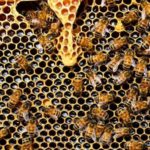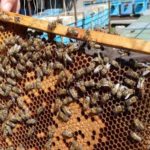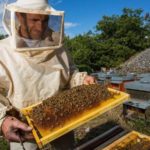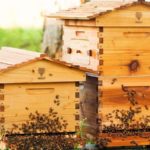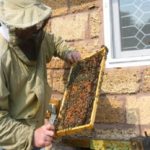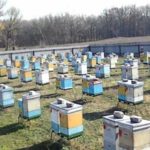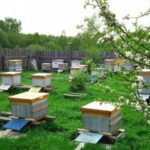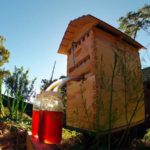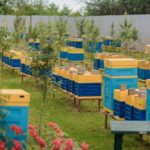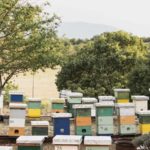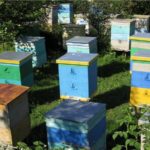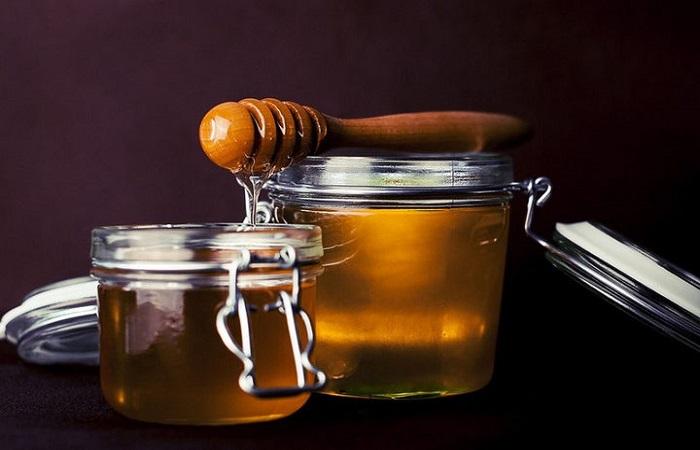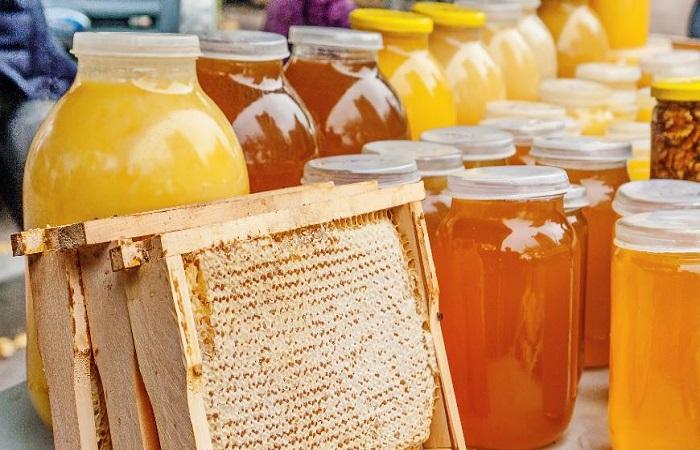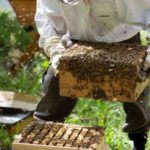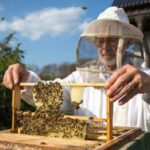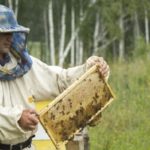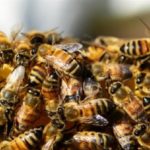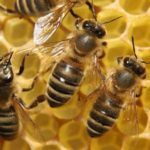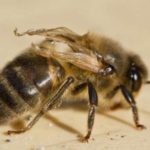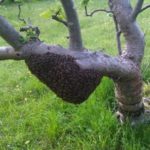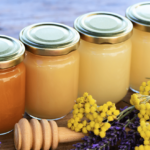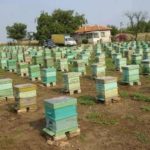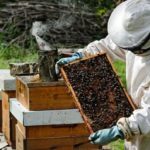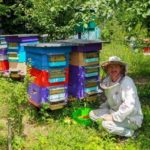Beekeeping seems to be a difficult business, requiring special knowledge and a large area for hives. But in the search for alternative income and natural products, beekeeping stands out as a separate niche along with the cultivation of strawberries and mushrooms. Let’s find out in more detail how to organize an apiary so that you can do it in your free time, and whether it’s profitable to engage in beekeeping yourself for the sake of fresh honey.
How much can you earn from bees?
Keeping bees is more profitable than it seems at first glance.In addition to honey, bees produce other products that are nutritious and rare enough to gain a regular clientele.
What does this include, and how much do beekeepers earn from selling:
| Product | Description | Price per kilogram, in rubles |
| Zabrus | The top layer of honeycomb, consisting of beeswax and honey, has beneficial properties, but is usually not sold due to its unpresentable appearance.
|
1000 |
| Propolis | An antiseptic known in folk medicine consists of tree resin, wax, and pollen. In the hive, the substance replaces putty for bees and maintains the microclimate. | 5000 |
| Perga | Bee food consisting of pollen and nectar. It is obtained by breaking honeycombs and usually serves as food for bees in winter, so it is only available to order. | 4000-5000 |
| Pollen | The rare product is extracted using a pollen trap, collected and dried. Contains amino acids, vitamins A, C and group B. | 1500-2000 |
| Wax | The natural substance is used to create scented candles. It is melted from used frames. | 1000 |
| Royal jelly | It is expensive and spoils quickly. Too bitter to eat, but popular in cosmetology. It is labor-intensively extracted from the cell in which the queen larva develops. | 66000
(1000 rubles for 15 grams) |
The production of some products is a complex process that even experienced beekeepers do not always undertake. Therefore, the main income for a novice beekeeper will come from selling honey.
For a kilogram of different types of product you can earn 500-600 rubles. Honey can be linden, buckwheat, acacia, or sweet clover, depending on the plant from which the bees collected pollen.
During the season, an average of 10 kilograms of honey is collected from a 12-frame hive, which brings an additional profit of 8,000-9,000 rubles. During a season in a warm climate and an area rich in herbs, the harvest reaches 60-80 kilograms, that is, you can earn 48,000 rubles over the summer.
How to register an apiary in Russia
To organize a bee business, you need an open plot of land. Its size depends on the number of hives. For a couple of houses, part of a summer cottage plot is enough. But those who want to start setting up a large farm from scratch should be aware of the following nuances:
- there should be a field or forest next to the apiary where bees can collect pollen from flowers;
- the consent of neighbors is required to install hives, since bees are not domestic animals and can cause harm to health;
- an apiary cannot be established next to cattle burial grounds and toxic waste storage sites, near industrial enterprises, highways;
- Beekeeping products must undergo laboratory control; for sale, a permit from the sanitary service must be obtained; and for an apiary, a veterinary and sanitary passport must be issued.
If the neighbors are not against insects or the area is secluded, first install individual hives or a carriage with several houses, and then contact the district authorities. How does registration work:
- submit an application for registration to the village council;
- fill out a passport for the apiary at the veterinary and sanitary service;
- the bee farm must be inspected by a veterinarian and its characteristics must be recorded in the passport.
The sanitary document is signed by the chief doctor of the veterinary service and the owner of the apiary. The bee farm must be inspected annually and marked in the passport.
Purchase of related equipment
In beekeeping, “nomadic” breeding is practiced, that is, a carriage (trailer) with hives is transported during the season to places where there are the most flowering herbs. A carriage trailer costs about 200 thousand rubles.
For beekeeping purposes, converted ZILs are also sold with a platform instead of a body, on which there is space for temporary housing for the beekeeper.The truck costs 250 thousand rubles and is the most expensive purchase with a claim to large sales and profits.
To open a small stationary apiary, a novice beekeeper will need:
- beehive - 4-5 thousand rubles;
- frames - from 22 to 100 rubles per piece;
- additional module (magazine) - from 600 to 3000 rubles, depending on the number of frames;
- honey extractor (apparatus for pumping honey out of frames) - 12-19 thousand rubles;
- equipment - overalls 2100 rubles, protective net for the face 200 rubles, gloves with sleeves 550 rubles;
- smoker (tool for repelling bees) - 400-1400 rubles;
- wax melter for melting wax from frames - 3-6 thousand rubles;
- knife for cutting honeycombs - 200 rubles.
Additionally, when breeding bees, you may need a swarm - a device for storing and transferring the grafted swarm to the hive. It is used to catch wild insects. But for a home apiary, it is better to buy a bee package in specialized stores and farms.
Apiary location
The main requirement for a high yield is an area with an abundance of honey plants. You can identify it by the sweet aroma that hangs in the air in summer. Honey plants are also specially planted in the area next to the apiary. Plants generous with pollen and nectar:
- Linden;
- white acacia;
- maple;
- raspberries;
- barberry;
- hazel;
- blooming Sally;
- sweet clover;
- phacelia.
Flowers of lavender, lemon balm, sage, buckwheat, hyssop and clover will also serve as garden decoration and sources of pollen for bees.
An unsuitable place for an apiary would be an area next to a pond, even if the honey plants are located on the shore.
If the bee farm is surrounded by residential buildings, a 2 meter high fence must be erected around the hives. The transport carriage also requires fencing if it stops in a populated area. Bees fly over a long distance and can sting someone. The fence will make the insects fly higher.
Sales and Marketing
A beekeeper has a variety of ways to sell products - from retail sales to friends and neighbors to organizing a full-scale business with advertising.
Ways to sell honey and bee products:
- through intermediaries;
- find buyers through acquaintances, friends and neighbors;
- create an online store website;
- advertise on social networks;
- rent a retail space at the market;
- participate in honey fairs.
The easiest way to sell honey is through the Internet and word of mouth. Photo reports on pages on social networks will show that the products are truly natural. Buyers will also be attracted by additional products, for example, scented beeswax candles and gift sets.
Taxation
Owners of registered private farms can keep bees and not pay taxes, since they collect honey for their own needs. Also, beekeepers do not pay taxes if they work themselves without hired workers, and the apiary is registered and has been inspected by the sanitary service.
A beekeeper can register an individual entrepreneur and pay taxes according to a simplified scheme.
A beekeeper must obtain the status of an entrepreneur and pay a fee when the apiary area exceeds 50 acres, and the honey is sold at retail at a retail outlet in a market or store.
The state provides subsidies to official beekeepers:
- compensation for a share of the costs of maintaining the apiary;
- for advertising sales, fairs and exhibitions;
- to buy bees;
- assistance in re-equipment and acquisition of large equipment.
Services are provided to owners of apiaries with fifty or more hives, so registering a business has advantages.
Competition
The competitiveness of a bee breeding business depends on the specific region. In Russia, apiaries are being established in all regions, even in the north. In total, the industry produces about 60 thousand tons of honey per year. Areas with the largest number of apiaries:
- Rostovskaya;
- Krasnodar region;
- Belgorodskaya;
- Volgogradskaya;
- Perm region;
- Orlovskaya;
- Saratovskaya;
- Nizhny Novgorod;
- Kemerovo;
- Tambovskaya.
Beekeeping is also developed in the autonomous republics and regions - Bashkortostan, Tatarstan, Dagestan and Altai. In other regions, competition for the sale of honey is lower.
Possible risks
The problem of bee extinction arose in the mid-twentieth century and worsened in the twenty-first. Insects are dying due to climate change on the planet, the use of chemicals in agriculture and the spread of diseases.
Troubles that novice beekeepers face:
- infection with varroa - the disease is caused by the varroa mite, a carrier of viruses dangerous to the health of bees;
- missed moment of swarming when the bees fly away;
- death of a bee colony in a cold winter due to insufficient insulation of the hives;
- Rainy summers and a short flowering period of the plant lead to crop failure.
In addition to the problems with caring for insects, for beginning beekeepers there is a risk that the costs of arrangement will not pay off in the first year due to low honey sales. Apiaries need to be well guarded, fences need to be installed, and entrepreneurs need to insure their farms.
Experienced beekeepers advise not to start setting up an apiary just for the sake of profit. The main motivation should be an interest in insects.

